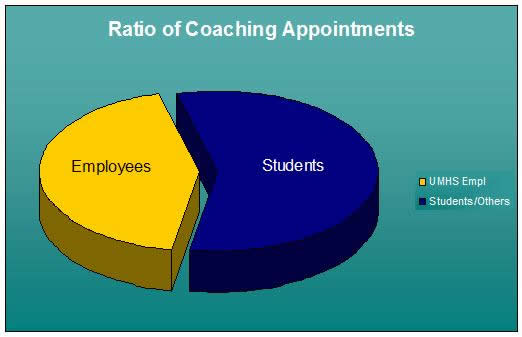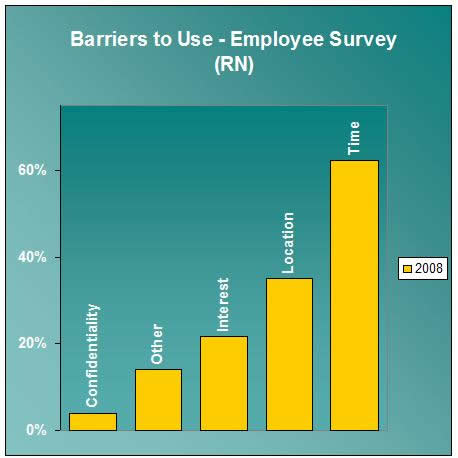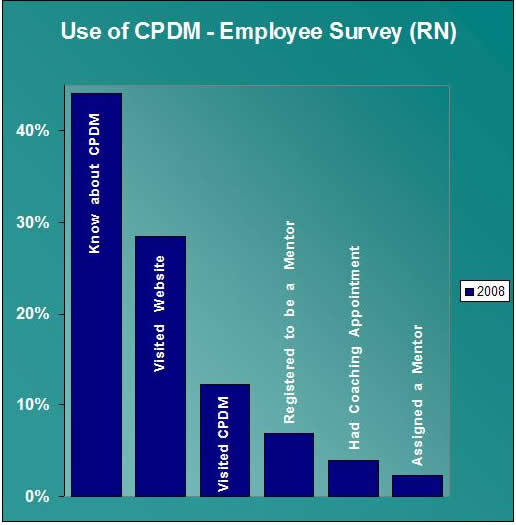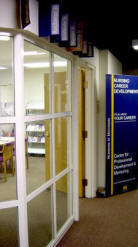PROJECT IMPACT
The following metrics per program are:
- Onsite BSN Program:
- 78 enrolled in the RN to BSN program
- 26 graduated to date (2008)
- ADN Internships:
- 24 A.D.N. internship placements
- Center for Professional Development and Mentoring:
- 162 coaching appointments
- 10802 Web site visits (10/2006 – 6/2008) (This included national and international visitors)
- 288 Candidate files built for the Center for Professional Development & Mentoring (CPDM)
- 123 Mentor files created for the CPDM
- 43 Mentors completed a cultural competency module
- Over 1600 nurses participating in: Nurse, Mentor and Manager Action Days.
The above metrics are a limited way to describe the impact of this multi-faceted project. The impact is better understood by the stories that the nursing community share with us in terms of gratefulness for the opportunity to have a place such as the CPDM to visit, or the opportunity to sit down with a Career Coach. One of the stories that arose out of the mentoring program was featured in our “Career Connections” (or click to here to view Connie's story directly), profile section.
Outside of the anecdotal stories, our CPDM customer survey indicated the impact and benefit of such programming as well. In response to the question: “How would you rate your overall experience at the CPDM in terms of your career/professional development?” 53% answered “Greatly helped”, 47% responded: “Helped”, 0% selected “No opinion” as well as “Did not really help”.
Bringing the RN to BSN program on-site had the impact of addressing the barriers to those interested in seeking degree based educational opportunities by offering a favorable locale and course offerings at times better matching working nurses’ availability. After the first year with over 30 enrollees, it was clear that the on-site BSN program was a feeder program to the
University of Michigan School of Nursing BSN program as well.
The institutional impact was felt beyond the obvious benefit of increasing our nurse’s educational standing. One of the ways the institutional impact was realized was through our ability to tie unique programming such as the Center for Professional Development & Mentoring to our institutions “distinctive differences” in attracting talent. We staffed a CPDM informational booth at all recruitment fairs which gave us the opportunity to illustrate our much used slogan, “The Michigan Difference”.
LESSONS LEARNED
Mentoring
Perhaps one of the biggest "lessons learned" or an "unanticipated outcome" was in regard to the mentoring program. There was a notable imbalance between those seeking mentors and those willing to become a mentor and is atypical of mentoring programs in other industries in which it is generally more of a challenge to find mentors willing to take on a mentee due to the need to be generous with ones time.
We had many more nurses seeking to become a mentor than those seeking to be mentored. This ultimately affected our ability to fully roll out our mentoring program as we had a capacity unmatched with need. We eventually suspended the mentor training program in an effort to curtail potential frustration of our mentors (who faced underutilization of their training and desire to become an active mentor), and looked for different ways to try and encourage our nurses to consider what a mentor might do for their career as a way of developing a potential mentee pool.
Two specific steps taken in the last six months of grant funding were to re-word our explanation and purpose of the mentoring program within our web site and to try and engage nurses differently - primarily by using career stories as a potential gateway for career service exploration. The Career Connections site was the culmination of this effort as well as a 3 minute flash module advertising all of the career center services, which was e-mailed to our greater nursing community within the health system. Additionally special “call-outs” where placed on the main web page imploring nurses to think about what a mentor might do for their career and linked to the mentoring program page to provide further details.
As the grant came to its end, it may have been beneficial to have had more time in order to address the culture change needed to encourage nurses to seek out help of this nature. Perhaps it is counter intuitive for nurses who are generally regarded as helpful, (and as the nursing profession necessitates), to "seek" help and perhaps explains the many more who were willing to "provide" help by being a mentor.
An attempt at a needs assessment for mentoring was included in our third and final educational attainment survey. Though the largest proportion of responders indicated that they would be willing to be both a mentor and a mentee (51% as compared to 22% who only saw themselves as a mentor), it was in contrast to a question soliciting the actual participation in mentoring in which nearly 7% indicated registering to be a mentor vs. only 2% indicating being assigned a mentor.
If using the combined values for those who would consider being a mentor (74%), and the combined values for those considering being a mentee (55%), you would expect the ratio then to follow in the proportion of registered mentors vs. those assigned a mentor. Given that nearly 7% of our survey responders indicated that they were registered to be mentors, one would then expect nearly 5% to seek a mentor based on the "perception of role" ratio described above -- yet only half this value (2.2%), indicated that they were actively being mentored at the time.
The needs assessment was inconclusive, but the direct action of seeking a mentor did not appear to match the “perceived" receptiveness to seeking mentoring within the survey responders.
Finally, there appeared to be a notable level of misinformation regarding the mentoring program (amongst other nursing programs), based on the write-in responses to the survey questions; the primary divide being expectations regarding ownership, (institution vs. individual), and between those who view mentoring as a type of job training vs. those who view mentoring as a professional goal (employee development is not necessarily the same as professional development). A take-away from this project is that a more targeted mentoring program may fare better; for example, a mentoring program to encourage nurses to pursue a nursing management career track as opposed to taking a broad all inclusive approach to the wide variety of mentoring needs. Narrowing of the program scope would help establish a clearer definition and context for subsequent program development and would establish more appropriate expectations regarding ownership and time investment in the mentoring roles and activity.
Thoughts on Real (staffed facility) vs. Virtual (web site) Career Center
The continuation of the center past initial grant funding is under review but from an administrative standpoint, the growth of use of the web based career center services outpaced the growth of those seeking actual face-to-face appointments (in fact, actual appointments showed a decline over time). Though the value is generally understood to be greater to the individual seeking career services with opportunities for face-to-face discussion, the expense of staffing for such services need to be weighed against the net benefit -- certainly many more people can be reached for a reasonable cost of building and maintaining a web presence - primarily due to the "ease of use" for potential candidates and 24/7 accessibility.
This seems to be corroborated with the results of our survey that indicated that "time" was the number one barrier to the use of the career center and contrasts the fact that a web site is not limited to "open" hours, (though time may still be a barrier for users even if services are available 24/7 via a web presence; however, over 28% of our survey responders had visited the web site in comparison to 12% indicating they had visited the center.)
In considering the maximum benefit for the minimum cost for future career models, and given that labor is the largest proportion of a facility based career center's expense, it would be worthwhile to explore alternative ways of staffing a career center; perhaps utilizing a licensed career counselor who also builds and coordinates a panel of RN specialists or job specific experts who may be willing to volunteer their knowledge and time on an as-need basis. Certainly a variety of other staffing resource models may be considered if attempting to provide more than just a virtual center via a web presence.
CPDM CANDIDATE DEMOGRAPHICS
Employee vs. Student

Barriers to Use

Awareness and Use of CPDM

Developed by: Marietta Van Buhler, Program Manager - UMHS Nursing Administration for HRSA grant #:D65HP05254 – Principal Investigator: Margaret Calarco, PhD, RN (2005-08)


